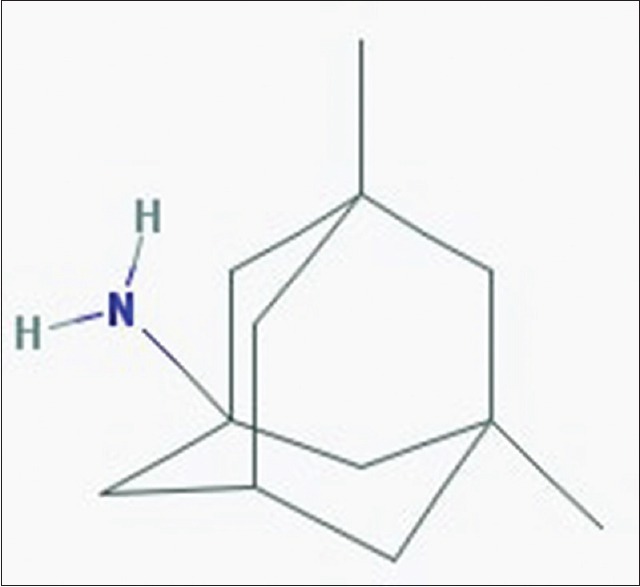Sir,
Treating neuropathic pain is a big challenge for pain physicians as the etiologies are multifactorial and the pathways involved are complex. The causes are numerous including postsurgical pain, postherpetic neuralgia, neuropathy due to diabetes mellitus, cancer pain (due to disease, chemotherapy), complex regional pain syndromes, phantom limb pain, and autoimmune diseases. Ineffective pain control adds misery to the already crippled life of the patient. Neuropathic pain not only reduces the quality of life but also increases the cost of the treatment.
There are various guidelines for the treatment of neuropathic pain from various international professional organizations such as the International Association for the Study of Pain, the European Federation of Neurological Society, the Canadian Pain Society, and the National Institute for Health and Care Excellence of the UK. There is a broad consensus among all these professional organizations, and they agree on tricyclic antidepressants, gabapentinoids, and serotonin-norepinephrine reuptake inhibitors as first-line drugs in many neuropathic pain syndromes. However, the numbers needed to treat neuropathic pain vary from 3 to 7 for all these first-line drugs. This is because the neuropathic pain is complex, and medications are poorly tolerated in many patients.[1] Hence, there is a growing need for newer medications to treat neuropathic pain.
Neuropathic pain usually arises due to injury or from dysfunction of the nervous system. This injury leads to increased glutamate production which being major excitatory neurotransmitter in the central nervous system leads to excitatory neurotransmission through postsynaptic receptors. During this phase of injury, there is an excess of glutamate receptors due to increased production of glutamate, increase in the functioning of glutamate receptors, and decreased metabolism of glutamate. Simultaneously, N-methyl D-aspartate (NMDA) mediates the release of substance P from the dorsal horn, leading to central sensitization by facilitating synaptic changes, and also increases the release of glutamate via presynaptic receptors.[2]
NMDA receptors are ionotropic receptors, which mediate neurotransmission via glutamine. Excessive NMDA receptor activity leads to excitotoxic cell death and is thus responsible for spasticity along with manifestations of acute pain, thereby progressing to chronic neuropathic pain if untreated or if the ongoing insult is not addressed. Based on this knowledge, NMDA-receptor antagonists are developed to treat neuropathic pain.[3]
Magnesium, ketamine, amantadine, memantine, and dextromethorphan are the drugs classified as NMDA-receptor antagonists. Methadone, carbamazepine, valproic acid, and phenytoin sodium also possess NMDA-receptor antagonizing properties.[4] Ketamine is a potent NMDA-receptor antagonist which not only interrupts normal synaptic transmission mediated by the NMDA receptors but also leads to undesirable psychomimetic symptoms such as hallucinations, sedation, and often needs admission. Intravenous magnesium also needs monitoring during administration; therefore, it can be used only in hospitalized patients. Dextromethorphan and amantadine are uncompetitive NMDA-receptor antagonists devoid of serious adverse effects. However, both the drugs never became popular for clinical use in chronic pain.
Memantine is an amantadine derivative first synthesized in 1968 [Figure 1]. Memantine is the only nonacetylcholinesterase inhibitor approved by the Food and Drug Administration for treating Alzheimer's disease (in the year 2000). Other indications in which memantine has been used successfully without serious adverse effects even after an extended duration of use are Parkinson's disease, spasticity, convulsions, and vascular dementia. The action of memantine at receptor level is similar to magnesium and is, therefore, referred to as “better magnesium.”[5]
Figure 1.

National Center for Biotechnology Information. PubChem Compound Database; CID = 4054, https://pubchem.ncbi.nlm.nih.gov/compound/4054 (accessed October 22, 2018).
Unlike ketamine, memantine has a low-affinity NMDA-receptor antagonist activity. It dissociates rapidly out of the channel after receptor inactivation thus causes minimal interference with normal synaptic transmission mediated by NMDA receptors. It is tolerated well even in doses of 40–60 mg/day (starting from 10 mg/day and can be increased as tolerated) even after several months of use. Memantine has been used successfully in treating conditions such as complex regional pain syndrome, phantom limb pain, fibromyalgia, and postmastectomy pain. There is no described contraindication of memantine. However, it is recommended to modify the dose in renal and hepatic impairment. No monitoring is required for a patient who is on long-term memantine.
To conclude, memantine is a safe NMDA-receptor antagonist that can be used to treat chronic neuropathic pain in which conventional pain medications and therapies have not been successful. However, there is a paucity of data on its use so far in many routine neuropathic pain syndromes. Hopefully, larger trials in the future can guide us; nevertheless, this is a drug that can to be tried when conventional 1st-line medications have failed.
Financial support and sponsorship
Nil.
Conflicts of interest
There are no conflicts of interest.
REFERENCES
- 1.Cruccu G, Truini A. A review of neuropathic pain: From guidelines to clinical practice. Pain Ther. 2017;6:35–42. doi: 10.1007/s40122-017-0087-0. [DOI] [PMC free article] [PubMed] [Google Scholar]
- 2.Vyklicky V, Korinek M, Smejkalova T, Balik A, Krausova B, Kaniakova M, et al. Structure, function, and pharmacology of NMDA receptor channels. Physiol Res. 2014;63(Suppl 1):S191–203. doi: 10.33549/physiolres.932678. [DOI] [PubMed] [Google Scholar]
- 3.Gonda X. Basic pharmacology of NMDA receptors. Curr Pharm Des. 2012;18:1558–67. doi: 10.2174/138161212799958521. [DOI] [PubMed] [Google Scholar]
- 4.Aiyer R, Mehta N, Gungor S, Gulati A. A systematic review of NMDA receptor antagonists for treatment of neuropathic pain in clinical practice. Clin J Pain. 2018;34:450–67. doi: 10.1097/AJP.0000000000000547. [DOI] [PubMed] [Google Scholar]
- 5.Chen HS, Lipton SA. Pharmacological implications of two distinct mechanisms of interaction of memantine with N-methyl-D-aspartate-gated channels. J Pharmacol Exp Ther. 2005;314:961–71. doi: 10.1124/jpet.105.085142. [DOI] [PubMed] [Google Scholar]


